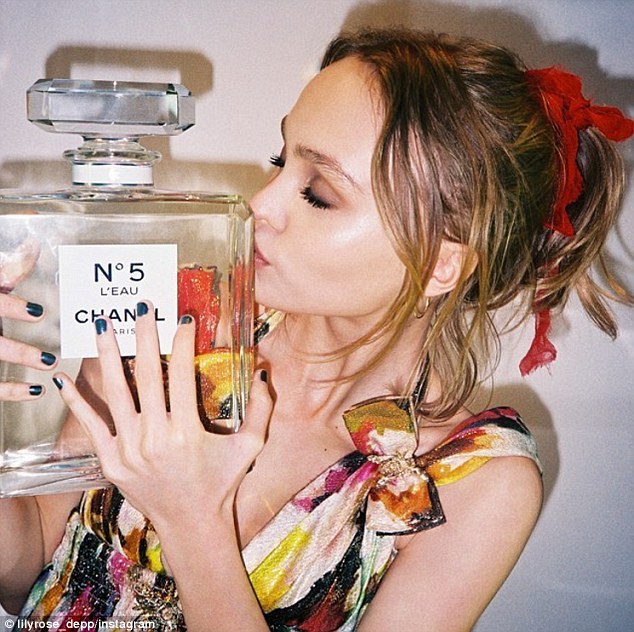Image: Model and Instagram Influencer Pyper America Smith for Tiffany & Co's #lovenotlike campaign (Source: Instagram)
The mythical millennial. In the U.S. alone, there are a reported 80 million people born between 1977 and 2000 making up this demanding generation, with a higher than average connection to information and a spending power of $600 billion per year. This figure is projected to grow to $1.4 trillion by 2020, and their appetite for luxury is fierce. While 75% of their spending is done primarily in store, a considerable amount of this is influenced by the brand’s offline presence. These ‘digital natives’ have grown up so attached to their technology, that there’s only a thin line between online and offline these days. They want the full brand experience at all times, both in-store and through the brand’s digital presence. With so many conflicting directions, the question on everyone’s minds is: how should luxury brands target these mythical millennials?
Social media has become a way for luxury brands to open a dialogue with their younger consumers. Brands who traditionally haven’t marketed to younger demographics are seeing the necessity in reaching out to and securing a ‘bond’ with millennials early in their development to enhance overall brand equity in the future. Marketing entry-level products (i.e. perfumes and beauty) to millennials who will aspire to purchase their own quilted mini flap bag has been the norm for years, though harnessing the power of social media is a new challenge for luxury brands. Encouraging posting through hash-tag campaigns has been a way to engage in an authentic way, such as Chanel’s launch of their new fragrance No.5 L’Eau, using Lily Rose Depp as spokesperson, harnessing their Instagram (and her account’s 2.5+ million followers) to release emotive videos and the evocative hashtag: ‘you know me and you don’t’.
Image: Lily Rose Depp speaks to a new generation of Chanel patrons (Source: DailyMail)
Influencer marketing has had mixed reviews as to effectiveness, however it’s clear thatinfluencers are determining ‘which brands are sought after and which are considered to be too elitist’, says Rowan Kelshaw, managing director of The Luxury Network LA. Forbes reported in 2015 that 33% of millennials rely mostly on blogs before making a luxury purchase. A marketing shift is occurring, away from traditional ‘celebrity spokespeople’ & ‘It Girls’ towards KOL’s (key opinion leaders) and bloggers who offer a more authentic angle to sell the ‘dream logic’ of the brand.
“This new generation of consumers no longer trust traditional advertising or even traditional celebrities. They've lost faith in marketing campaigns which over glamorize, over promise, or seem like they are coming from someone who doesn't feel authentic…” says Daniel Saynt, CEO & Chief Creative Officer at Socialyte, the world’s largest influencer casting agency. Interaction with influencers gives brands a chance to create emotive, authentic content, specially curated to cut through traditional advertisements, or as Jean-Noel Kapferer put it: ‘refueling the luxury dream’. Luxury brands such as Rolex (their 2015 collaboration with Roger Federer propelled Rolex back into the social media conversation), Tiffany & Co. (their #LikeNotLove campaign featured blogger ‘royalty’ Chiara Ferragni among others), and Dolce & Gabbana have had success with teaming up with influencers to create hashtag campaigns that encourage authentic two-way communication with the brand and its consumers. Dolce& Gabbana’s 2017 Spring/Summer campaign featured a slew of millennial influencers including kids of former supermodels and Instagram famous models, actresses, and musicians.
Image: Sonia Ben Ammar, Thylane Blondeau, Cameron Dallas, Brandon Thomas Lee, Presley Gerber, Luka Sabbat, & Rafferty Law for Dolce & Gabbana’s spring 2017 campaign (Source: Fashion Gone Rogue)
It’s clear that the landscape for marketing to millennials is changing, and going forward, it will be important for luxury brands to choose wisely when it comes to marketing spend. Shifting away from traditional one-way advertising towards a two-way communication will be paramount, though they’ll have to pick their influencers wisely in order to create value for the customers, aligning the company’s target audience with the influencer’s network.
References:
https://www.luxurydaily.com/targeting-millennials-experiential-marketing-is-the-way/
http://www.mckinsey.com/industries/retail/our-insights/luxury-shopping-in-the-digital-age
https://www.luxurydaily.com/social-media-presents-brands-with-inspirational-window-to-millennials/
http://www.harpersbazaar.com/fashion/models/news/a17202/chanel-no-5-lily-rose-depp-ad/
https://www.businessoffashion.com/articles/news-analysis/retailers-shift-strategy-court-millennials
https://www.businessoffashion.com/articles/news-analysis/retailers-shift-strategy-court-millennials
https://experienceluxury.co/new-influencers-luxury-brands-targeting-millennials/
http://luxurysociety.com/en/articles/2015/10/how-luxury-brands-are-leveraging-the-new-influencers/
http://www.fashiongonerogue.com/dolce-gabbana-spring-2017-campaign/


